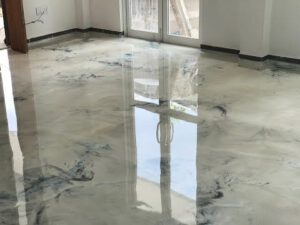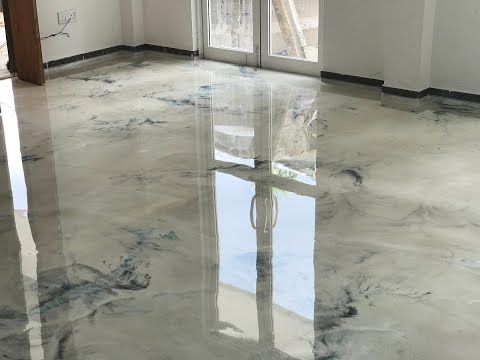If you’re in the market for a new flooring option for your home, you might want to consider epoxy. This flooring offers many benefits, such as easy cleaning, durability, and anti-slip characteristics. But before you can get started, you need to know more about how to apply it and what to expect.
One of the most important things you need to do before installing Epoxy Flooring covering is to prepare the surface. Properly prepared surfaces will allow your epoxy coating to perform to its fullest potential.
The best way to do this is to take accurate measurements and test the surface for moisture before commencing the job. In addition to removing excess dust, you’ll also need to make sure the surface is ready to accept epoxy.
A quick check of the floor for any divots or chips can indicate whether the surface is ready to receive an epoxy coating. Before you begin, however, you’ll need to repair any cracks and other imperfections in the concrete.
A good quality epoxy coating should be applied to a clean and dry surface. To ensure a smooth finish, you’ll need to vacuum the floors first and then apply the coating. You can use a shop vacuum to do the job or hire a professional to do it for you.
Another important step is to remove all loose or damaged epoxy. You’ll need a wide roller for spreading out the new coating.
For the best results, you’ll need to apply the coat in small sections. Ideally, you’ll need to wait at least an hour before applying the coating to avoid bubbles. If you do apply the coat too quickly, the floor may become slippery.
There are many reasons why a floor may need multiple coats of epoxy. Some are fixing surface imperfections, while others are adding layers of protection. Whether you choose to add the top coat or not, you need to do it properly.
The most important thing to remember is that you must use the best quality epoxy available. In order to achieve the most durability, you should use a product that has a good abrasion rating. You don’t want to end up with a floor that peels or bubbles. The same applies to choosing a clear coat.
You will also need to use a primer. This is a product designed to seal out moisture and make the epoxy adhere better to the concrete. It can also increase the overall coverage of the epoxy.
After you have applied the primer, you can apply the first coat of epoxy. You can apply the epoxy using a squeegee or roller. You will need to wait about 12 hours for the epoxy to dry.
The second coat can be poured after the first coat has dried. You can sand the epoxy between coats to remove high spots and provide a tooth between the first and second layers. You can broadcast anti-skid additives such as pumice or colored quartz granules from 3M on the top coat while it is wet.
Lastly, you should allow the epoxy to cure for about 24 hours before you start using your car or truck on the floor. At this time, the previous coat can cure, and you will not need to worry about your garage flooring separating.
Emitted fumes from epoxy flooring can pose serious health risks. They can cause respiratory problems, including asthma and skin irritation. However, there are ways to mitigate the effects of these fumes.
The first thing to do is to understand what the symptoms of epoxy fumes are. The symptoms usually involve irritation of the nose, throat, and lungs. They can also cause allergic reactions, which can include itching, rashes, and red eyes.
A good way to avoid these symptoms is to use a portable fume extractor. These units use activated carbon filtration to capture hazardous epoxy fumes. Depending on the type of epoxy you are using, there are different types of filter media available.

